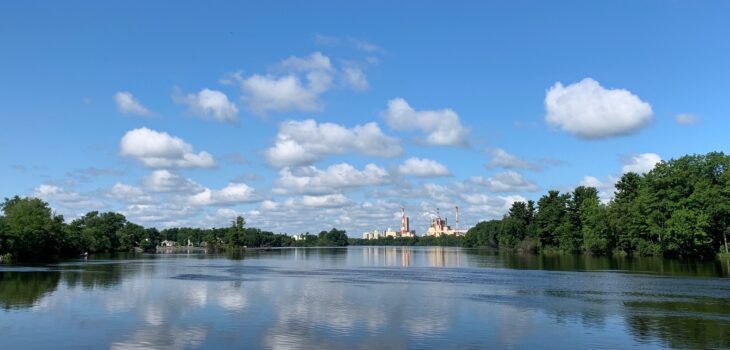
Wisconsin Rapids paper mill looms large over the city
Considering I spent most of my adult life in Wisconsin Rapids, I never realized how the paper mill looms large — literally — over the city.
Intellectually, I knew of its size and importance. The paper mill employed the most people and was the biggest company in our community. Thousands of people worked there. Generations passed through its doors. Consolidated Papers was in business for nearly a century.
I was managing editor of the Daily Tribune when the company was sold in 2000. For many years, I kept the front page of the newspaper that announced “CPI SOLD.” It was the biggest headline we’d ever done in my tenure there.
The recent announcement that the Rapids mill would be closed was not a surprise. It’s been a long time coming. It’s passed through a couple of owners since its initial sale, and pieces have been divested or downsized. But it still is a disappointment to the people who work there and the community as a whole. Almost 1,000 people work there, and losing those jobs will have an impact on the community.
Looms in the skyline
And yet, it was surprising to me to see the mill so prominent in the skyline when I came back to Wisconsin Rapids. It’s like I overlooked it all of the years I lived here.

Living close to the river, I often go that direction when I’m out for a walk. The city has created a nice walking area on the east side of the river. It gives a great view of the west bank. I’m startled to see the mill in the background. It looms over everything.
Sometimes I just sit by the river and watch the world go by. I’ve always liked the Wisconsin River. It’s a beautiful asset for the city. So many communities lack any sort of water feature. The river is a beautiful part of the city of Wisconsin Rapids.
Even as I sit now and look out over the water, I remember what it was like before. All those years I worked in the Tribune building, I never really paid attention to the mill’s proximity. Now as I sit and watch, with years between, I see how close it was — how it literally looms large in the city.
I’m not sure how I didn’t notice it then, how I didn’t really see it. Then again, I was that way about a lot of things at that time.
Sometimes it takes the passage of time to see what was there all along.
How to Be a Better Writer Tip
How to use a style guide
In my last column, I wrote about creating your own style guide and promised to explain how to use it in this column.
I use a style guide two ways: I look things up as I write, and I check my copy against it when I’m done.
Look things up
As you write, you may remember certain things that are included in the style guide. For example, do you capitalize a particular word? Or do you use a particular spelling for a place?
For example, when I worked at the newspaper, our local style guide included the spelling of local park names. “Ben Hansen Park” is misspelled on park signs. I always looked it up.
Check against the guide
If your style guide is short enough, without too many entries, you can check your copy against it when you’re done. The guide we used at the newspaper had many, many pages, and our tight deadlines made it impossible to check copy against the guide. Instead, we looked things up.
But with the work I do now that’s very tailored, I’m able to check my work against the style guide. To do this, I simply go through the guide entry by entry. It reminds me to check for things, like spelling “de-stress” with a hyphen.
Despite my growing style guide (I add to it often in my quest to provide clean copy), I have organized it so it’s easy and quick to go through. I also know which things I tend to do wrong consistently, and I focus on those.




2 COMMENTS
I also grew up in Wisconsin Rapids and I totally love what you wrote about the mill. It was many people’s goal to get a job at the mill so they could live the good life. You did a fitting tribute. Thank you.
Thank you, Theresa. I appreciate your kind words!